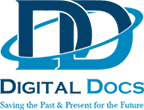Film Scanning is a service we provide to digitize invaluable footage captured on film by people who have sought to capture their emotions and experiences, knowledge and achievements, important events and loved ones. Thanks to the digitization of films, you can easily watch videos in a modern format on a tablet or smartphone, on a high-definition TV or share them anywhere and with anyone.
Film, as a carrier, in the last century has lost its relevance and widespread use in both domestic and commercial purposes. Currently, only enthusiasts and a few filmmakers who appreciate the visual aesthetics provided by this analog media are shooting their video.
Today, the films are unique memories of the distant past in various forms of presentation – whether scientific, personal, documentary or artistic videos. Even with special requirements for storage conditions of light-sensitive material from which films are made, their operation is fraught with damage and each viewing of invaluable material may be the last. That is why it is high time to save the memory of physical destruction under the influence of time.
The choice of digitization method directly affects the quality of the resulting video and the preservation of the state of your films during this process. There are several basic methods of digitizing films:
- Shooting on the camcorder from the screen. A common household method of digitization, which is often neglected by film digitization service providers. The film is reproduced on a domestic movie projector, the video camera (mostly also household) is aimed at the screen or white wall on which the image is projected from the movie projector. Even with the ideal quality of the media with video output, a significantly worse copy is obtained.
- Lens to lens. The most common method among film service providers for film digitization. The film is played on a household movie projector, which is modified to “frame-by-frame” recording of material with a video camera. “Framework” is provided by the features of manual modifications of the movie projector and software removal of individual “extra” frames. The camcorder is aimed at the lens of the movie projector, which gives a slightly better result than when shooting on the camcorder from the screen. Video correction is limited by the quality of the copy obtained and the capabilities of software developed by enthusiasts using this technology.
- Telecine. The low prevalence of this method is due to the rarity of special equipment, which is mostly large. The film is played at normal speed, frames are recorded in a video file with the resolution of the camera on which recording is performed. The camera is aimed directly at the backlit film. Color correction, stabilization, damage correction and other types of processing that affect the appearance of personnel are limited by the capabilities of hardware and related software and are performed “on the fly”. Copy quality is much higher than in previous cases.
- Frame-by-frame scanning. This method allows you to obtain an image of each frame without loss of quality (RAW). A high-speed camera with a high-resolution matrix is aimed directly at the backlit film. Due to the high-quality scanning of each frame of the film, the possibility of post-processing is provided, which is limited only by the imagination and skills of the relevant specialist. Copy quality is maximum.
We use the method of frame-by-frame scanning of films using special equipment. You can read more about the equipment with which we can guarantee the maximum quality of digitization of your materials on this page.























